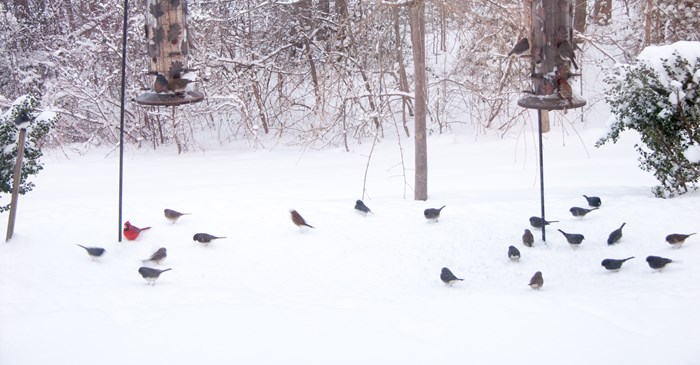If you were gifted a bird feeder this holiday season, don’t wait until spring to set it up! Even though it’s winter, there are plenty of songbirds that stick around, and a feeder filled with a tasty blend of seeds and nuts is always a welcome sight.
What to see in the winter
The kinds of birds that flock to your feeder by winter will depend on what part of the country you live in. As a rule, winter feeding often attracts birds like the Northern Cardinal, the Black-capped Chickadee and the House Finch. Winter is also prime feeder-watching season for birds that rely on insects in the summer, such as woodpeckers and nuthatches. It's fun to get to know what lands at your feeder, so download a birding app to your smartphone, or pick up one of these region-specific bird guides.
Where to hang your feeder
If the frozen ground and cold weather keep you from setting up your new station, try a short-term solution for now. Simply hang your feeder from a low tree branch, or hang it from a rope tied between two trees (or other stationary objects in your yard).
Set out water
Birds are always on the lookout for a good water source, even in the winter. Each morning, set out a shallow pan with no more than an inch of fresh water and you have an easy upgrade for your feeding station that will draw a crowd!
What should fill your feeder
If you’re just starting out, don’t be tempted by the bargain prices at the supermarket. Birds are looking for energy-dense foods like black-oil sunflower seeds and peanut pieces. But bargain blends often come with milo seeds and other fillers that hungry birds will only push aside, making a mess of your yard or deck. Start with Lyric’s Delite Mix. It skips the messy shells and fillers, so all you'll serve is the meat of those seeds and nuts that birds love.
